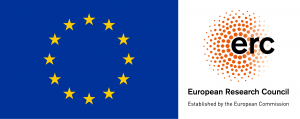Articles of J. Ponzo, F. Galofaro, E. Chiais (EC, 35/2022)
F. Galofaro, Pilgrimage Notes. Religious Tourism and Ethnosemiotics, in Il turismo tra memoria e futuro, special issue of “EC”, 35 (2022), pp. 163-178 (PDF)
Abstract
During its development, semiotics has mainly dealt with documents, whose meaning is reconstructed starting from a support which can be archived: volumes, films, CDs, databases, music scores. However, in the perspective of Greimas and his school, the text should not be confused with the document, since the former is the result of an analysis applied to a signifying set. Thus, at least since the late 1990s, semiotics has become interested in objects of study that are not ready-made documents: practices, rituals, spaces that contain them, events that happen under the eyes of the observer, and whose analysis should be considered the application of a semiotechnique, aimed at the production of meaning. This leads to the main question around which ethnosemiotics revolves: what are the conditions of possibility of ethnographic inquiry? The present work tries to answer the question starting from a case study: a pilgrimage to the shrine of Koden which I participated in on August 15, 2021, on the occasion of the celebrations for the assumption of Mary.
J. Ponzo, E. Chiais, The Form of Life of the Contemporary Spiritual Pilgrimage: the Case of Santiago de Compostela, in Il turismo tra memoria e futuro, special issue of “EC”, 35 (2022), pp. 179-187 (PDF)
Abstract
This essay focuses on the paper and digital literature about the Camino de Santiago de Compostela (particularly on tourist guides and travel stories) to explore today’s practice of pilgrimage and how it can take a spiritual rather than religious form. This kind of pilgrimage is narrated as an inner quest free from religious faith and traditional devotion. The reflection compares the form of life of the pilgrimage to Santiago with the form of life which characterizes the tourist experience in general ( as it is defined by Brucculeri). It then takes into consideration the pragmatic and narratological dimension of the spiritual pilgrimage and identifies three main phases (the first consists in the acquisition of a competence through the use of “programmer” texts, the second in the personalization of the narrative program, when the subject takes in charge the standardized scheme, and the third in the narration of the journey). This type of pilgrimage is characterized by an object of value which is initially undefined and progressively becomes clear as the pilgrim advances. It is also characterized by dynamics similar to those identified by Caillois concerning the game. In particular, the category of mimicry is relevant. The pilgrim has their own uniform, which is well recognizable, but starting from some standard elements they can build a different path and a different character depending on their values and tastes: from this perspective, the pilgrim constitutes a thematic role that is embodied in different figurative roles.


